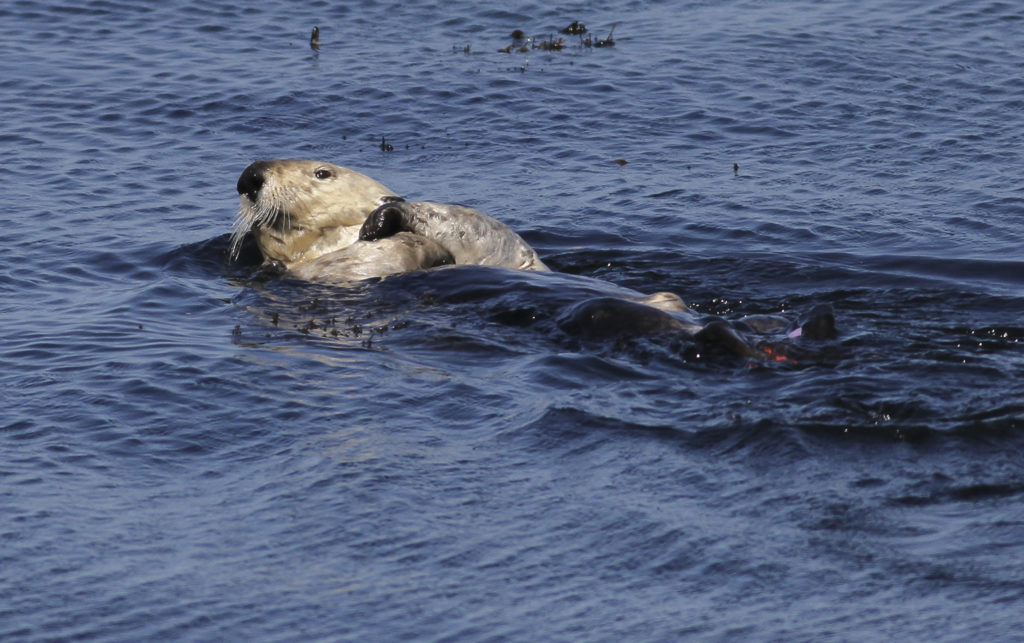Creature Feature

The Sea Otter: A Keystone Species
By Wayne Bierbaum
Ten years ago, I traveled to iconic Monterey, California, a coastal city author John Steinbeck made iconic as he fictitiously chronicled the collapse of the sardine fishing industry there.
While I was visiting, I was able to see the great kelp beds, the brown algae that provide shelter and food for so many coastal creatures. Unfortunately, I was also witnessing the beginning of its sharp decline.
During 2012 and 2013, warm weather and a sudden disease in the starfish species that eat sea urchins caused the decline. Sea urchins thrived and consumed the heat-weakened kelp. Areas of the ocean floor are now called urchin barrens with only urchins seen covering the floor. But help is on the way in the form of one aquatic mammal.
One animal can be important to maintaining the health of an ecosystem. For the Chesapeake Bay, the oyster is usually thought of being the keystone species. In California, it’s the sea otter.
Patches of healthy kelp are spreading due to the attention of cuddly-looking sea otters. They live in and around the kelp beds and love to eat urchins. They prefer the urchins that are feeding on kelp and not the ones found in urchin barrens, which are less nutritious and apparently less tasty. The kelp that is thriving thanks to the otters’ attention is spreading seeds, allowing the species to flourish.
In 2021, a surge in the kelp forest along the northern California coast and north into Alaska has reportedly been largely due to the sea otters. Sea otters spend their entire lives around kelp. They sleep by wrapping a strand of kelp around their waist. Even the pups get a kelp anchor as their mother looks for food.
Otter pups are reared in the water. Otters live 15 to 20 years and have one or two pups a year. Sea otters are well known for using a flat rock balanced on their belly to smash open food like urchins, crabs and shellfish.
In the late 1700s, the sea otter fur trade ramped up to keep up with the demand for soft warm fur. By 1900, only about 3,000 otters remained along the entire West Coast. In 1911, it became illegal to hunt them. By that time, kelp was at a sharp decline and fish stock like sardines was also declining.
Kelp is a remarkable plant. It is a brown algae anchored to the ocean bottom with a very long stalk, up to 100 feet, with a hollow gas-filled float near the top. The light collecting fronds are buoyed near the surface by the float. Kelp forests protect a whole kingdom of animals and decrease beach erosion; they also reduce carbon dioxide.
The environmental group, One Earth, describes the importance of the kelp and the sea otter. “Researchers have found that the presence of sea otters increases kelp forest carbon storage from 4.4 to 8.7 megatons annually. To put that in perspective, it would take 3 to 6 million passenger cars removed from the road to equal that amount. As more money is being invested into carbon capture technology, scientists like Chris Wilmers and Jim Estez from the University of California at Santa Cruz advocate that more value should be placed on protecting and restoring sea otter populations as a natural climate change solution. Using the current price on the European carbon market, the amount stored by kelp forests and reinforced by sea otters would be worth $205-$400 million. Such mitigation of global greenhouse gasses makes these cuddly creatures all the more lovable.”
